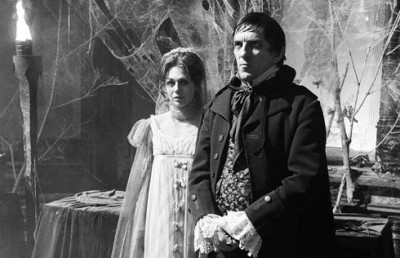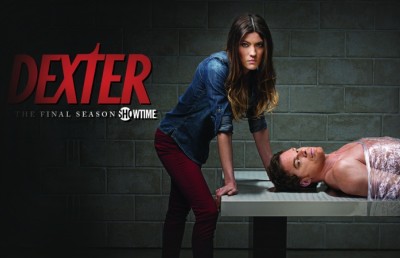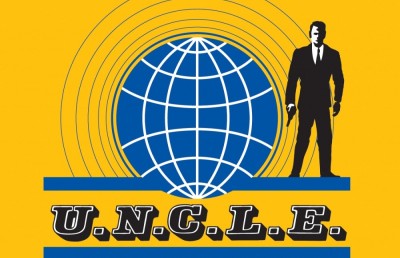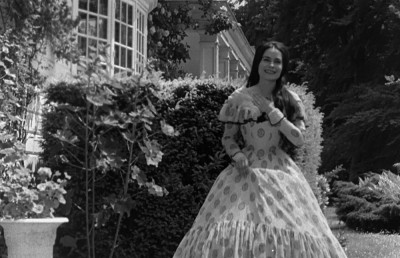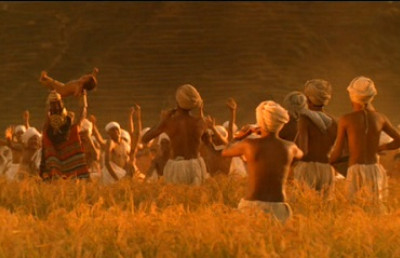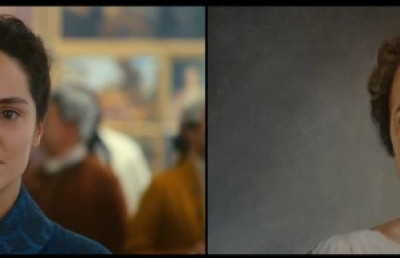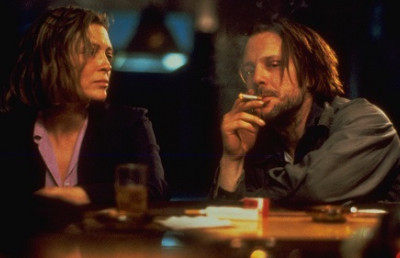Revolution & Sex: The Evolution of TV

REVOLUTION
“There was no great television before The Sopranos.”
That has become a mantra among many contemporary television critics. In the last two years there have been two books, which we will get to in a minute, that promoted the idea. And the idea is full of crap.
A personal note here first, although I realize if you are a Sopranos (1999-2007) fan it may make you stop reading this article. I grew up in the American Midwest, went to college for four years on the East Coast, and have now lived on the West Coast for fifty years. When The Sopranos first came on, I watched one episode. It seemed to me to be mostly about ugly, stupid, violent people doing ugly, stupid, violent things to other ugly, stupid, violent people. I just couldn’t take a show about a bunch of New Jersey gangsters seriously. Let them all kill each other and we will all be better off. I have a similar problem with many of Martin Scorsese’s movies; as I wrote in my book American Audiences on Movies and Moviegoing on Casino (1995), “I also think that Scorsese was so into the tragic, melodramatic view of gangsters that he did not understand that for everybody living west of the Hudson River, the story was basically a comedy: ‘Goodfellas Go to Vegas and Get Their Clocks Cleaned by a Bunch of Cowboys’” (Stempel, 2001: 148).
Now then, do we have anybody left reading?
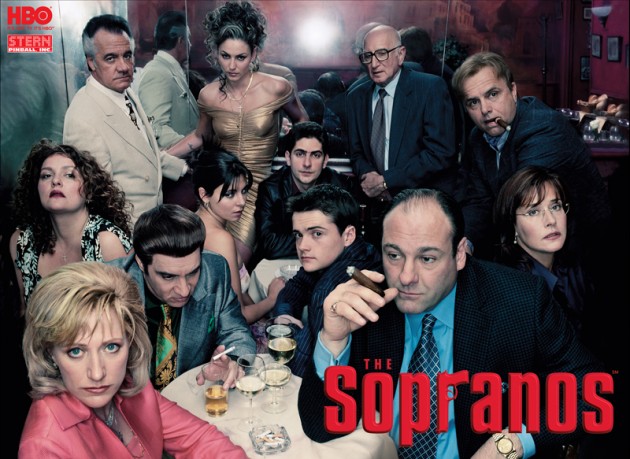
The Sopranos became a critic’s darling of a show, which is not the first nor the last time that critics and/or regular viewers have loved stuff I hated. The problem I had with much of the writing about The Sopranos was that the writers began to claim that the show had caused a REVOLUTION IN TELEVISION. It hadn’t. An evolution perhaps, but not a revolution. I was surprised at the historical ignorance of the critics and writers who seemed unaware of how television has developed over the years. I have a professional rooting interest in this question, because in 1992 I published Storytellers to the Nation: A History of American Television Writing (Stempel, 1992). In it I followed the history of television and writing for television from the early days in the late forties to the early nineties. If there was revolution of the kind claimed for The Sopranos, it took place in the eighties.
The key show in the revolution of the eighties was Hill Street Blues (1981-1987). There had been cop shows before, but they were most procedurals: for an hour we follow the cops as they solve one case. From the beginning Hill Street Blues had multiple story lines, some extending over several episodes. It had a large cast, each of them given very distinctive characters, and unlike previous cop shows they were not all noble. Captain Frank Furillo, the chief of the precinct, was upright and uptight, but as we discover at the end of the first season, he was also a recovering alcoholic. Sgt. Mick Belker was a slob who went undercover and had been known to bite suspects. Lt. Norman Buntz was such a great sleazeball that the showrunner Steven Bocho transformed him into the even harder-edged Detective Andy Sipowitz the following decade in NYPD Blue (1993-2005); Dennis Franz played both characters. Although the Hill Street precinct was a masculine environment, the show had just as many interesting women characters, such as Sgt. Lucy Bates and public defender Joyce Davenport. Davenport argued with Furillo about defendants’ rights during the first episode, and then in the final scene, we see them canoodling together in a bathtub. Hill Street Blues was the first television series I can remember being described as Dickensian in its social reach and depth.
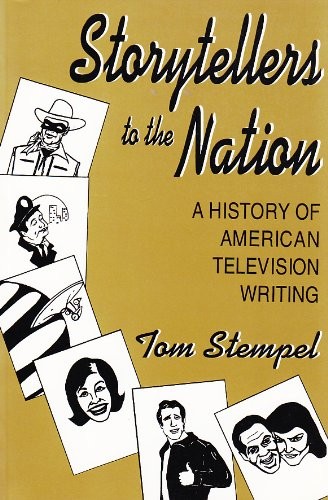
Hill Street Blues was not a one-off. It was followed by what I called in Storytellers the Children of Hill Street (Stempel, 1992: 237-245): St. Elsewhere (1982-1988), which did for a hospital what Hill Street Blues did for a police precinct; L.A. Law (1986-1994); thirtysomething (1987-1991), China Beach (1988-1991), and on into the nineties not only with NYPD Blue, but E.R. (1994-2009). All had characters of great richness and depth. Many had elaborate twists and turns (Rosalind Shay falling down an elevator shaft in L.A. Law; China Beach telling its abortion story in reverse chronology) and occasional moments of spectacular surrealism (the finale of St. Elsewhere revealing the entire series has been the dream of an autistic boy).
I suppose it should not surprise me that neither of the two authors whose books I will be discussing appear to have read Storytellers (the book does not appear in their notes or bibliographies), but I was hardly alone in promoting the idea in the nineties, before The Sopranos came along, that television had developed into an artistically important medium. Robert J. Thompson, now the Director of the Bleier Center for Television & Popular Culture at Syracuse University, made some of the same points I made in his 1996 book Television’s Second Golden Age: From Hill Street to St. Elsewhere (Thompson, 1996). Thompson has also supervised a series of serious books on television for Syracuse University Press. What Thompson and I and others were promoting also showed up in the popular press. In 1995 Entertainment Weekly ran an article entitled “TV Saves the World,” which it promoted with a line on the cover that read “10 Reasons TV is Better Than the Movies” (Fretts: 22-30). Six of the ten reasons could be found in at least nascent form in Storytellers. I have no idea if Fretts or any of the ten people credited for “additional reporting” on the piece read Storytellers, but they may have picked up some of the idea from television writers who had quickly adopted the book. The idea that television had matured was now part of the culture.
Alan Sepinwall started reviewing television in the nineties and eventually wrote for The Newark (New Jersey) Star-Ledger. In 2005 he was one of the first critics to change the nature of television criticism. Previously critics would review two or three episodes of a series at the beginning of its run, then occasionally drop in to visit over the run of the show. What Sepinwall started doing, and other critics began to pick up on, was in-depth looks at every episode of a series. This limited the number of series he could deal with, but with the quality level of several series, his approach worked. If you had series as complex as The Sopranos or The Wire or Mad Men, you could do that kind of writing. It also meant you were more emotionally and intellectually invested in some shows, thus reinforcing the sense that the shows were more significant than previous television shows.
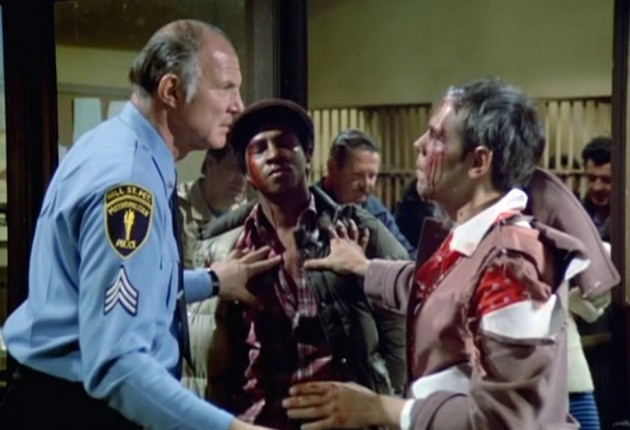
Hill Street Blues
Sepinwall’s book is The Revolution was Televised: The Cops, Crooks, Slingers, and Slayers Who Changed TV Drama Forever. Sepinwall begins with a prologue in which he pays lip service to several of the earlier shows I mentioned above, but you get the feeling he is just being polite. After a brief chapter on Oz (1997-2003), Sepinwall dives into The Sopranos, which he loves, and which he generally writes smart about. In comparing mob boss Tony Soprano to Sipowitz, Sepinwall notes that Sipowitz softened over the course of his series, which Tony did not. It’s good point, and it goes to the heart of what Sepinwall sees as the revolutionary element in The Sopranos. David Chase, the show’s creator, had been writing for television for years, including such shows as Northern Exposure (1990-1995) and I’ll Fly Away (1991-1993). He hated dealing with all the interference he got from the commercial networks he wrote for. The Sopranos was done for the premium cable channel HBO (where there are no commercials to break up the shows, as on network television), and once they agreed on the project they left Chase alone. So if Chase did not want to soften Tony, he did not have to. Many of the series that Sepinwall and others write about admiringly were done for premium or even basic cable channels (cable with commercials) that followed the pattern HBO set of not interfering in the productions. It did give the creators a freedom they had not had at the networks.
Or did it? What was different on cable was that there was no interference from the beginning. In traditional network television what happened was that when a show became a success, the networks tended to loosen their control. Look at the first episodes of M*A*S*H (1972-1983) and compare them to episodes in its last years. Those later episodes are bloodier, sexier, and generally more bizarre than the earlier ones. That came from Larry Gebart and the others who ran the show taking advantage of its success. HBO gave Chase his freedom immediately. But ABC gave Stephen Bocho, on the success of Hill Street Blues, freerer rein at the beginning of NYPD Blue in terms of language and restrained nudity, than he had had on Hill Street Blues. The looser control placed on the creative teams in cable was not so much revolutionary as it was part of the evolution of television.
Sepinwall, whose book includes recurring interviews with both the creative staffs of the shows and the network and cable administrators, does bring up an interesting point. After the success of HBO’s Oz (1997-2003), in addition to considering The Sopranos, HBO was considering a series about a woman executive written by Winnie Holtzman, one of the creators of My So-Called Life (1994-1995). Sepinwall writes, “ The new golden age of drama that The Sopranos triggered has largely involved shows built around middle-aged male anti-heroes –as the saying goes, imitation is the sincerest form of television, even if it’s innovative television– and I do wonder what the revolution would have looked like if Oz had been followed by the Holtzman show ” (italics in the original; Sepinwall: 37). He hits on one of the reasons I am not sure what we are talking about was a revolution. If it was, it was a very narrow one, given its focus on those characters. Most of the shows Sepinwall writes about fit into that category, with the exception of Buffy The Vampire Slayer (1997-2003) and Friday Night Lights (2006-2011). He is not alone; other critics are particularly drawn to those kinds of shows, which seem to me to be very limited in their vision of the world. I am not the only one to think so. Mary McNamara, the television and cultural critic of The Los Angeles Times, has taken on the issue of the male anti-hero in at least two columns one on the anti-hero, and another on a hero showing up in the world of anti-heroes.
The second book on the “revolution” in television is Brett Martin’s 2013 Difficult Men: Behind the Scenes of a Creative Revolution: From The Sopranos and The Wire to Mad Men and Breaking Bad. Martin is not a television critic, but appears to write primarily about food. While Sepinwall takes us through the changes over the seasons in each of the shows he writes about, Martin writes more about the connections between those “middle-aged male anti-heroes” in the shows and the shows’ creators. If Sepinwall is focused on the shows he likes and has written about over the years, Martin is looking for shows that fit the pattern of anti-hero as showrunner. Both authors write about many of the same shows: The Sopranos of course, The Wire (2002-2008), Deadwood (2004-2006), The Shield (2002-2008), and Mad Men (2007-). Martin does not write about Buffy the Vampire Slayer or Friday Night Lights. Martin does list Thompson’s Television’s Second Golden Age in his notes as “invaluable,” but there is no indication in the book that he read or understood it. He does not even pay lip service to the history of television that Sepinwall at least does. Being a journalist rather than an historian or critic, he is more interested in the present, and as a result, even less aware of the limitations of the concept of a “revolution” in television. It seems to me that if you are talking about change, you had better be a little clearer about how the change relates to the historical context of television.
So, was there a “revolution” in television or not? In talking about this with my wife she said that it seemed to be more of a revolution in cable television than in all of television. She has a point. Most of the shows that Sepinwall and all of the shows Martin write about are cable shows. The premium and later basic cable channels, starting with HBO with Oz, began moving into scripted dramas and comedy in the nineties. Several of those shows became critics’ darlings and won multiple awards. As Sepinwall said, imitation is the sincerest form of television. If leaving the creative people alone worked for HBO, then why not at Showtime or FX? But the shows that came out of that process were often limited, as in the case of the male, middle-aged anti-heroes. Neither Sepinwall nor Martin write extensively about the women characters in the mostly male shows, and if anything, many of the shows are distinctly misogynistic, especially in the violence directed toward women. There is also considerable nudity in the cable shows, almost exclusively female and above the waist, or as my adult daughter put it a few years ago, “Basic cable is nipples and commercials.”
The other freedom that the “revolution” provided was linguistic. The language in the cable shows got rawer and rawer. Like the violence toward women, it was also misogynistic, and it just got tiring. Sepinwall praises what he calls “the profane poetry” of Deadwood (Sepinwall: 96), but for many viewers it was simply exhausting, and the series only lasted two seasons, in part I suspect because of the language.
A better book about contemporary American television drama is by an English academic named Christopher Bigsby, who has written, among other things, a biography of American playwright Arthur Miller. His book is called Viewing America: Twenty-First-Century Television Drama. You will notice right away he does not have the word “revolution” anywhere in the title. Nor anywhere in the book. And the photograph on the cover, unlike Martin’s book, is not of James Gandolfini as Tony Soprano. It is the cast of The West Wing (1999-2006). What? Didn’t he get the memo? It was a NETWORK, not a cable show. Well, Bigsby is not concerned about fomenting ideas about a revolution. He simply accepts that there is a lot of great work being done on American television. Like Sepinwall and Martin, he generally ignores the writing that has been done about television history. There is no mention of mine or Thompson’s books, but he does include in the bibliography Douglas Heil’s Prime-Time Authorship: Works About and By Three TV Dramatists, which covers some of the changes in television writing. There is only one reference to Heil in the book, and that oddly enough leads to a quote from Heil that is from Thompson’s book. You might have thought he might be like Gil Grissom on CSI:Crime Scene Investigation (2000–) and follow the evidence, but no.
What Bigsby realizes is that you can now analyze television drama in the same way he has analyzed the plays of Arthur Miller. In other words, he is skipping the folderol about a revolution and getting into the heart of the matter. Yes, he does deal with The Sopranos, The Wire, and Mad Men, but also network shows like The West Wing (he sort of thinks the shift in quality begins with this series, which shows why he should have read more deeply into TV’s history) and Homicide: Life on the Street (1993-1999). The analytical skills Bigsby brings to bear are impressive, and while he is not quite as lively a writer as Sepinwall and Martin, he will take you into the shows in more depth than the other two.
But it is still the same collection of shows about white, male, middle-aged men, most of whom are anti-heroes. Has the evolution simply degenerated into that?
No necessarily.
SEX
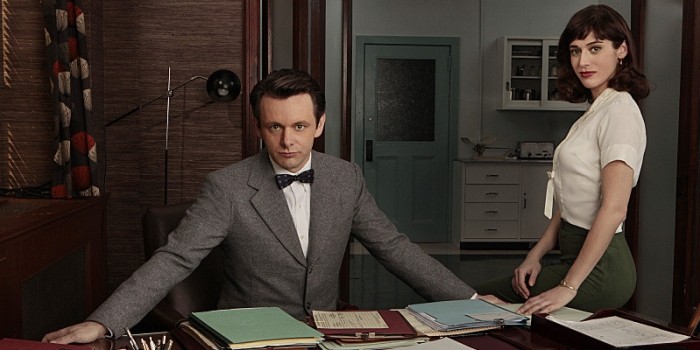
Masters of Sex
In the index of Brett Martin’s book Difficult Men, Sex and the City (1998-2004) has only three mentions, each one only on one page, while The Sopranos has 45, many of them several pages long. Bigsby’s Viewing America has only for one mention for Sex and the City. Sepinwall’s The Revolution Was Televised has no index, but a rough skim found only two mentions of Sex and the City. On page 17 Sepinwall writes, “And although many accounts of the cable-driven revolution tend to begin with Sex and the City or The Sopranos …” and the show is not mentioned again until the end of the book. One of my biggest objections to the “no great TV before The Sopranos / Revolution” idea is how the male-centric writers, like many male executives in the industry, ignore women in television. If there was a revolution/evolution, it can be seen just as plainly in the shows by and about women.
In television in the fifties, the women were primarily wives and mothers. In Rocky King, Detective (1950-1954), we never meet King’s wife. We don’t even hear her as he tells her on the phone how he solved the case at the end of each episode. By the sixties, there was at least one unmarried woman lead in a sitcom, That Girl (1966-1971), but we have no indication whether she was sexually active. Mary Richards, the lead in The Mary Tyler Moore Show (1970-1977), was allowed to be discreetly sexual, but the network would not allow her to be a divorced women as the creators originally wanted. In the anthology series Police Story (1973-1977) there were occasional women cops, but they were usually going undercover as hookers.
By Hill Street Blues there were not only women cops, but a woman public defender, unmarried, sleeping with a detective. In Cagney & Lacey (1981-88) the two buddy-cop leads were women. There were a variety of women lawyers in L.A Law. thirtysomething focused as much on the lives of Hope, Ellyn, and Nancy as it did on Elliot, Gary, and Michael, although Joseph Daugherty, one of the show’s writers, noted, “For a while there, Ellyn was supposed to have an ectopic pregnancy, resulting in a hysterectomy. And Ann [Hamilton, one of the other writers] and I have been saying, ‘Excuse me? You’re going to take out the sex organs of two of the four female characters?’ [Nancy had previously had cancer.] That’s fifty percent. That’s a little statistically significant. That was nipped after much screaming” (Stempel, 1992: 266). China Beach, a series about medical personnel in a war zone, differentiated itself from M*A*S*H by focusing on a female nurse. There were male doctors and patients, but Colleen McMurphy was the main character, and she was surrounded by a galley of interesting women. The primary relationship she had in the series was not a romantic one, but a strained friendship with K.C. Kolowski, a woman wheeler-dealer.
Sex and the City focused on four single (at the start of the series) women friends who worked in various jobs and had sex. Lots and lots of sex. And they talked about it as much as they did it, if not more. There was as much “profane poetry” from Carrie, Charlotte, Miranda, and especially Samantha as there was in Deadwood, but the explicit language on Sex was not just the expletives, adjectives, and adverbs as on Deadwood, but nouns and verbs and creative phrasing. In other words, the content of the show, not just the filigree around the edges. Sex and the City’s linguistic influence can be seen now even on broadcast network shows such as CBS’s 2 Broke Girls (2011— ).
Which brings us up to Showtime’s Masters of Sex (2013–).
Dr. William Masters was an enormously successful obstetrician and gynecologist in St. Louis in the 1950s, as well as a professor at Washington University. In the mid-fifties he began to go beyond what Alfred Kinsey had started in research about sex in the forties. Kinsey’s approach was to interview people in great depth about their sex lives, which assumed the subjects told the truth about their sex lives. Masters felt the better way was to observe sexual behavior and scientifically measure it. He started by looking through keyholes at prostitutes, and then moved into getting subjects to have sex in his laboratory. The subjects had assorted wires attached to them to measure their physical reactions, and later they were filmed. Early in his studies, Masters added to his team Virginia Johnson. She had no scientific background, but had an innate sense of how to deal with a variety of people that Masters lacked. He could be charming to his patients, but he could also be cold. Johnson’s personal warmth was indispensible to the project. Their landmark study, Human Sexual Response, was a sensation in 1966.
In 2009 Thomas Maier published a dual biography of Masters and Johnson entitled Masters of Sex: the Life & Times of William Masters and Virginia Johnson, the Couple Who Taught American How to Love. A television producer, Sarah Timberman, saw a review in the New York Times, and contacted Maier’s agent. She was interested in turning it into a television drama. The pilot was shot in March 2012 (Maier 2013: 380) and the series premiered on Showtime, a premium cable channel, on September 29, 2013.
The writer Timberman approached to run the show was Michelle Ashford. A showrunner, in television terms, is a producer, usually experienced as a writer, who supervises the show, especially the writing. Ashford’s second credit as a television writer was a 1988 episode of Cagney & Lacy. After several years of writing for network television she was frustrated with the limits of network television. She says, “The Sopranos completely changed my life. I was toiling away in network television and thinking, ‘My God, there has to be a better way to do this!’ I would just get so frustrated with what it had to be and what it couldn’t be – then The Sopranos came on and I was like, ‘Oh, that’s what you can do!’ “ (accessed March 20, 2014). Yes, I realize that quote will be catnip to The Sopranos /revolution crowd, which is why I could not resist putting it in. If I have not yet convinced you it was just an evolution, then you should go back and reread the first half of this article. Ashford was determined not to go back to network television and wrote on both the John Adams (2008) and The Pacific (2010) miniseries for HBO, receiving an Emmy nomination for the latter. Ashford agreed to take on Masters of Sex, since she had come to enjoy writing non-fiction. She did a “five-second Google” (accessed March 20, 2014), and realized the story of Masters and Johnson was relatively well known, so the dramatic structure became not “what happened when,” but “how it happened.”
Ashford was not afraid of changing elements in the story. As she has said in several interviews (see the online sources at the end of the article), she knew she could not change the date of the publication of Human Sexual Response, but she had no hesitation about changing Masters’s wife’s problem getting pregnant until after Masters meets Johnson. In fact, it was Masters’s medical rather than sexual skills that eventually got Libby pregnant, and they had two children by the time Johnson joined Masters’s team.
Ashford also invented characters, commenting, “There are some characters that were in their world that we simply can’t take and represent because we’d be in legal trouble. So some of them are combined for that reason.” One of Masters’s mentors was a closeted gay married man, and Ashford narrowed the mentors down to a fictional one, Scully, the closeted Provost of the University. Then Ashford and the writers (there were seven writers on the first season in addition to Ashford) began to think about what it must have been like to be his wife. She recalled
… and then we said, “Well, who would that wife be?” and we thought, “What if it’s [actress] Allison Janney?” and then we got very excited. [Laughs.] Once we had her in mind, we were like wild dogs. She felt so besieged because we were just like, “You have to do this part, you have to do this part,” and she’s like, “Well, first of all, I’m not getting naked.” Once she was on board, and she got into the material and hung out with everybody, we had a really happy group. Then by the last episode, she’s like, “When do I get to get naked? Don’t I get to get naked?” (accessed March 20, 2014).
As a character, Masters certainly fits into the category of “difficult men,” as Martin calls them. He is as cold in the first season of the show as he was in real life. A high school friend of mine, Mike Johnson, did his psychiatric residency at Washington University when Masters was there and heard some of his presentations. Mike thinks the series and actor Michael Sheen capture Masters beautifully, a man whose personality he says was “as starched as his white coat.” Ashford and her writers are careful, however, to have at least one moment in each episode in the first season where Masters does something nice for somebody, keeping Masters from becoming a cliché. Ashford knows how he will develop in later seasons.
The breakout character in the series is Virginia Johnson. Even though the first season is set in the fifties, there is nothing conventionally fifties about Johnson. She is a divorced mother who sees, more than most female characters in films and on television both in the fifties and now, that there is a difference between sex and love. Part of the success of Masters’ research was Johnson’s ability to convince students, secretaries, faculty wives, and others to be subjects in important research. She can talk openly to everybody about sex, but not in a crude way. Sex and the City and Two Broke Girls brought explicit language to television, but Masters of Sex uses that linguistic freedom to get deeper into our sexual attitudes.
Of all the shows Sepinwall, Martin, and Bigsby write about, Mad Men and Deadwood are the only ones set in the past. Given the lack of historical perspective of those three writers, it is not surprising. It does mean that they all nearly completely miss the ways in which Mad Men captures the attitudes of the whole decade of the sixties. I went to college on the East Coast with several guys who could easily have been Pete and the other younger men at Sterling, Cooper. That is particularly true of their attitudes towards women and sex. The men are generally clueless about women, and the series shows that in a variety of scenes with a variety of characters. Of the three authors, Bigsby is the only one to deal with Peggy in any detail, even though she is second in importance to Don in the show.
The men in Masters are just as clueless as the boys at Sterling, Cooper, and that includes Masters. Part of what drives him is his curiosity about women’s sexuality. What he and Johnson discover are details about female sexuality that nobody knew. For example, Freud posited that there were two kinds of female orgasms, the clitoral and the vaginal. Freud stated that the first was merely an adolescent form of sexuality and that the latter was the adult form. In the episode “Brave New World” (written by Lynnie Greene & Richard Levine), Johnson and Jane, a secretary and study participant, go to hear a talk by Freud’s daughter Anna. When they ask her how we know there are two different kinds of orgasms, Anna Freud just assumes we do, then says she has no idea how it would be possible scientifically prove it. Johnson and Jane go back to the lab and discover the two are really the same, which leads to Jane’s great line: “My clitoris is beating my vagina” –Samantha of Sex and the City would be so proud. The scene with Anna Freud is, like many in the series, not in the book, but Maier had given Ashford a lot of material not in the book (accessed March 20, 2014), and some scenes in the series may be from that additional material.
The first season of the show was critically very well received (and even our old friend Alan Sepinwall wrote favorably about it (accessed March 21, 2014), but it received only one Golden Globe nomination (for Sheen), and it remains to be seen whether it will get any nominations at the Emmys in the fall of 2014. Mary McNamara made an interesting observation in November 2013, when she told Amy Dawes, “It doesn’t seem to be generating the kind of talk a hit cable show usually does, but it’s got a lot of awards potential” (Quoted in Dawes: S42). It was not only not generating talk, but the behind-the-scenes aspects of the show were not being covered in the print medium (Los Angeles Times, Entertainment Weekly, etc.). When I went searching for material on Michelle Ashford and the show, I found most of it online. My take on the lack of public and print discussion of the show is that it deals so explicitly with sex that it is difficult for people to talk about without getting embarrassed. It is one thing to talk about Walter White and his meth labs around the office water cooler, but quite another to talk about the details of orgasms Masters and Johnson discovered, not to mention the plastic dildo with the camera in it. Joanne Ostrow, the terrific television critic at the Denver Post, did an interview with the people on the show, but it appeared in her online blog and not in the paper. Well, I doubt her editors would allow her to print in a family newspaper Lizzy Caplan’s (Virginia Johnson) great line about what she has learned doing the show: “People’s masturbation techniques are a lot like snowflakes” (accessed March 21, 2014).
Another reason the show has not yet been talked about and awarded is that unlike the shows Sepinwall, Martin, and Bigsby write about with such admiration, Masters of Sex is very much from a female perspective. Its originating producer, Sarah Timberman, is a woman, and Michelle Ashford is a married mother of two. Lizzy Caplan thinks that having women writers made the scenes of the friendship between Johnson and Masters’s wife Libby work, since she did not think male writers would have seen it in the same way (Paley Festival). Four of the eight writers on the series are men, and one of Ashford’s jobs as the showrunner is to make sure the tone of the show is consistent, which it is. Maier’s book makes it clear that Johnson was a much more interesting character than Masters was, and the series, particularly in Caplan’s spectacular performance, follows that through. The men in the show seem clueless about sex, particularly female sexuality, and male viewers, such as those who write extensively about television and who vote for awards, may feel uncomfortable with its adult view of women and sex. Perhaps the series will help open up male viewers and, like Masters and Johnson’s research, help males (and females) understand their own sexuality.
On March 24, 2014, the William Paley Festival of Television included a panel discussion with the creative people of Masters of Sex. It was in the Dolby Theatre in Hollywood, where the Academy Awards are held annually. It is a large theatre and nearly the entire main floor was filled with fans of the show, who were perfectly willing to talk about sex, and the show. Several of the panelists, all of whom have thought about the show a lot, noted that it is not just about sex, but about love and marriage. Michael Sheen, who plays Masters, loves the show because it deals with all the complexity of the characters. And the women on the show discussed the complexity of wearing women’s undergarments of the fifties, which may or may not show up in Entertainment Weekly, one of the sponsors of the festival. My daughter did a day’s work as an extra on the second season of the show, and agreed with the actresses on the fifties clothing, but she did sort of like the pointed bra she had to wear.
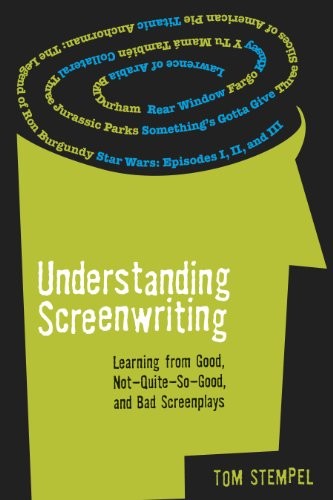
In my 2008 book Understanding Screenwriting: Learning from Good, Not-Quite-So-Good, and Bad Screenplays, I had a long chapter, in the Good section of course, on the scripts for the great 2004 film Kinsey (Stempel, 2008; pp.51-76). I mentioned that the film had not done as well at the box office as it might have. I suggested several reasons why that might have been so. One was that serious films about sex have always had a difficult time doing well in America. I quoted the writer-director of Kinsey, Bill Condon, from an article on the issue of sex in films. He said, “There’s a lot of joking about sex [in American films], but the actual idea of talking about sex makes a lot of people nervous, no doubt” (Stempel, 2008: 75). I suggested that seeing a movie about sex in a theatre, perhaps with your parents and/or your kids in another auditorium in the same multiplex, might make you nervous. I then suggested that people might feel more comfortable getting their sex at home on television (Stempel, 2008; pp.74-5). The relatively good ratings the first season of Masters of Sex suggest that may be the case. We will have to wait to see if the series, however long it runs, starts a revolution or at least an evolution in how Americans think and talk about sex. The panel discussion at the Paley Festival was an encouraging start.
Bibliography
Bigsby, Christopher. Viewing America: Twenty-First-Century Television Drama (2013). Cambridge, England: Cambridge University Press.
Brooks, Tim, and Earle Marsh. The Complete Directory to Prime Time Network and Cable TV Shows 1946-Present (6th Edition, 1995). New York: Ballentine Books.
Dawes, Amy. “Fresh Fare for Globe Voters,” Los Angeles Times, November 21, 2013, pp. S42-S43.
Fretts, Bruce. “TV Saves the World,” Entertainment Weekly, October 20, 1995, pp. 22-30.
Johnson, William H., and Virginia E. Johnson. Human Sexual Response (1966). Boston: Little, Brown and Co.
Maier, Thomas. Masters of Sex: the Life & Times of William Masters and Virginia Johnson, the Couple Who Taught American How to Love (2009, updated paperback 2013). New York: Basic Books.
Martin, Brett. Difficult Men: Behind the Scenes of a Creative Revolution: From The Sopranos and The Wire to Mad Men and Breaking Bad (2013). New York: The Penguin Press.
Sepinwall, Alan. The Revolution was Televised: The Cops, Crooks, Slingers, and Slayers Who Changed TV Drama Forever ( self-published, 2012, Touchstone 2013). New York: Touchstone.
Stempel, Tom. Storytellers to the Nation: A History of American Television Writing (1992). New York: Continuum. 2nd Edition: 1996, Syracuse N.Y.: Syracuse University Press.
______ American Audiences on Movies and Moviegoing (2001). Lexington, Kentucky: University Press of Kentucky.
_______ Understanding Screenwriting: Learning from Good, Not-Quite-So-Good, and Bad Screenplays (2008). New York: Continuum.
Thompson, Robert J. Television’s Second Golden Age: From Hill Street to St. Elsewhere (1996). Syracuse N.Y.: Syracuse University Press.
Online Resources
The William Paley Festival of Television Panel Discussion on Masters of Sex, March 24, 2014. Participants included:
- Sarah Timberman
- Michelle Ashford
- Michael Sheen
- Lizzy Caplan
- Caitlin FitzGerald
- Teddy Sears
- Annaleigh Ashford
Conversations
- Tova Hollander
- Mike Johnson
- Audrey Stempel
- Kerstin Stempel



